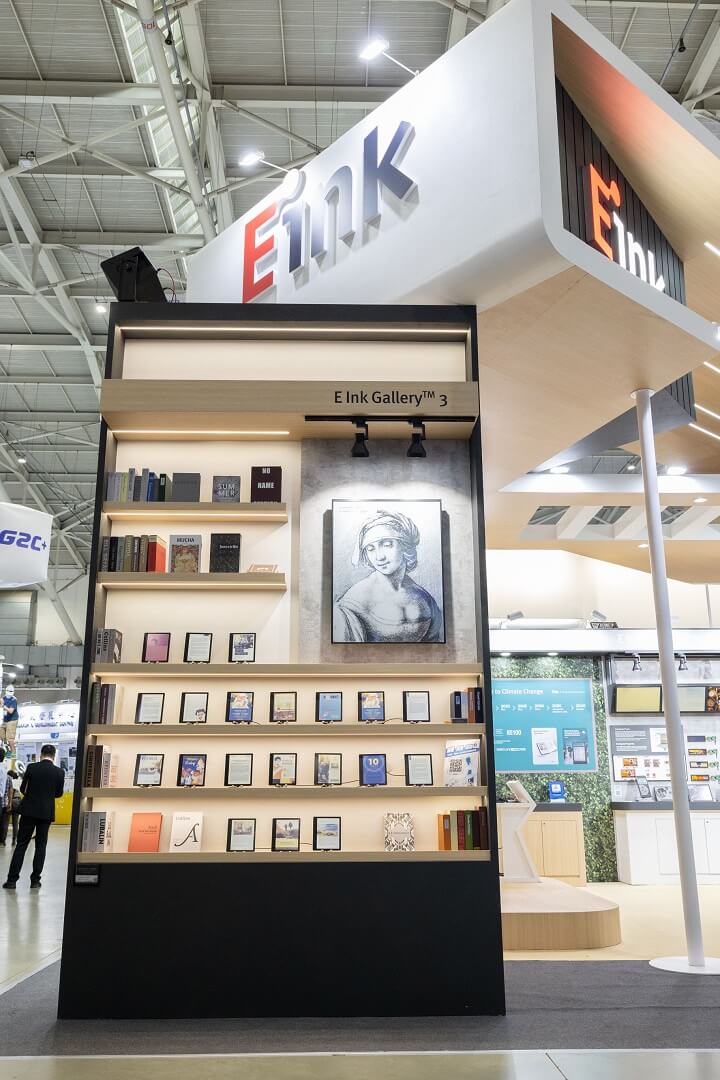TECHNOLOGY DESCRIPTION
簡介
Learn more about E Ink and how our technology works.
電泳式電子墨水(Electrophoretic Ink)
電泳式電子墨水(Electrophoretic Ink)技術通稱為電子墨水(Electronic Ink)。將電子墨水塗佈在一層塑膠薄膜上,再貼覆上薄膜電晶體(TFT)電路,經由驅動IC控制,形成像素圖形,創造了電子紙顯示器(Electronic Paper Displays, EPD),也常被習稱為電子墨水螢幕、電子墨水屏等,具體而微地形容了這是一塊用墨水、也像墨水製造出的螢幕。
電子墨水使用的原料相似於印刷產業,但融合了化學、物理學、電子電路等領域的知識和技術,電子墨水這種全新的材料得以問世。
與其他顯示器技術最大的不同在於,電子紙是反射式、雙穩態的顯示技術,所以視覺上看起來與傳統紙張幾乎沒有差異,因此能擁有護眼、節能的效益。
單色電子墨水系統

電子墨水由數百萬個微膠囊(Microcapsules)所構成,微膠囊的大小約等同於人類頭髮的直徑。每個微膠囊裡含有電泳粒子懸浮於透明液體中,使用一種黑色電泳粒子的系統,創造出E Ink JustTint™。
E Ink JustTint™利用較新的電壓驅動方式,將黑色墨水移動至兩側,中間形成透明的通道,從上方看下來就是透明的。經由控制黑色墨水的分布,可以控制電子墨水薄膜從透明到不透明的通透度。
將E Ink JustTint™電子墨水薄膜貼覆至玻璃或塑膠上,可以控制光的透射程度。
雙色電子墨水系統 - E Ink Carta™
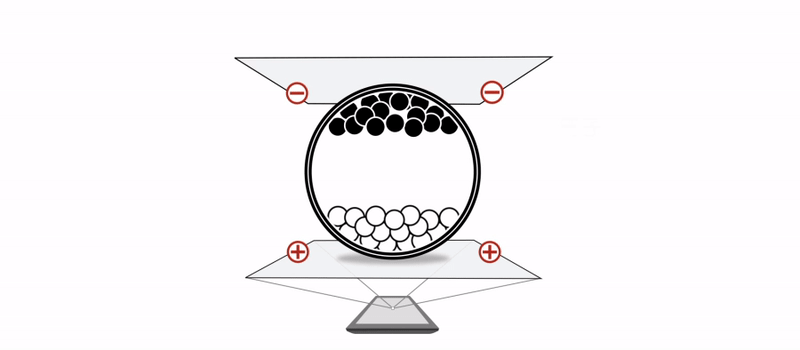
E Ink Carta™
每個微膠囊裡含有兩種顏色電泳粒子──帶負電荷的白色以及帶正電荷的黑色粒子,懸浮於透明液體中。利用正負相吸的原理,當電場接通時,該區塊對應的黑或白粒子會移動至微膠囊的頂端,使用者在該區塊上,就能看見白色或黑色。
E Ink Carta™ 電子墨水薄膜就利用雙色粒子系統形成黑白及灰階的文字或圖樣。
三色電子墨水系統 – E Ink Spectra™ 3000
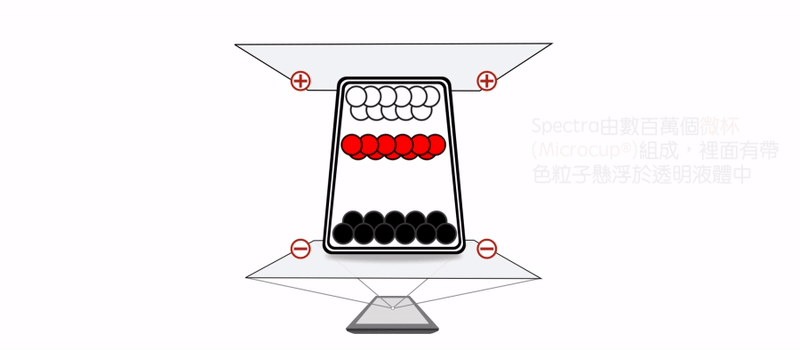
E Ink提供三色電子墨水系統E Ink Spectra™ 3000,特別適用於電子貨架標籤(Electronic Shelf Label, 簡稱ESL)應用。
三色電子墨水系統運作原理與雙色系統類似,施加不同的電壓,使不同顏色的粒子移動至上層,看見不同的顏色。三色系統在微杯技術(Microcup®)架構下開發而成。
四色電子墨水系統 – E Ink Spectra™ 3100
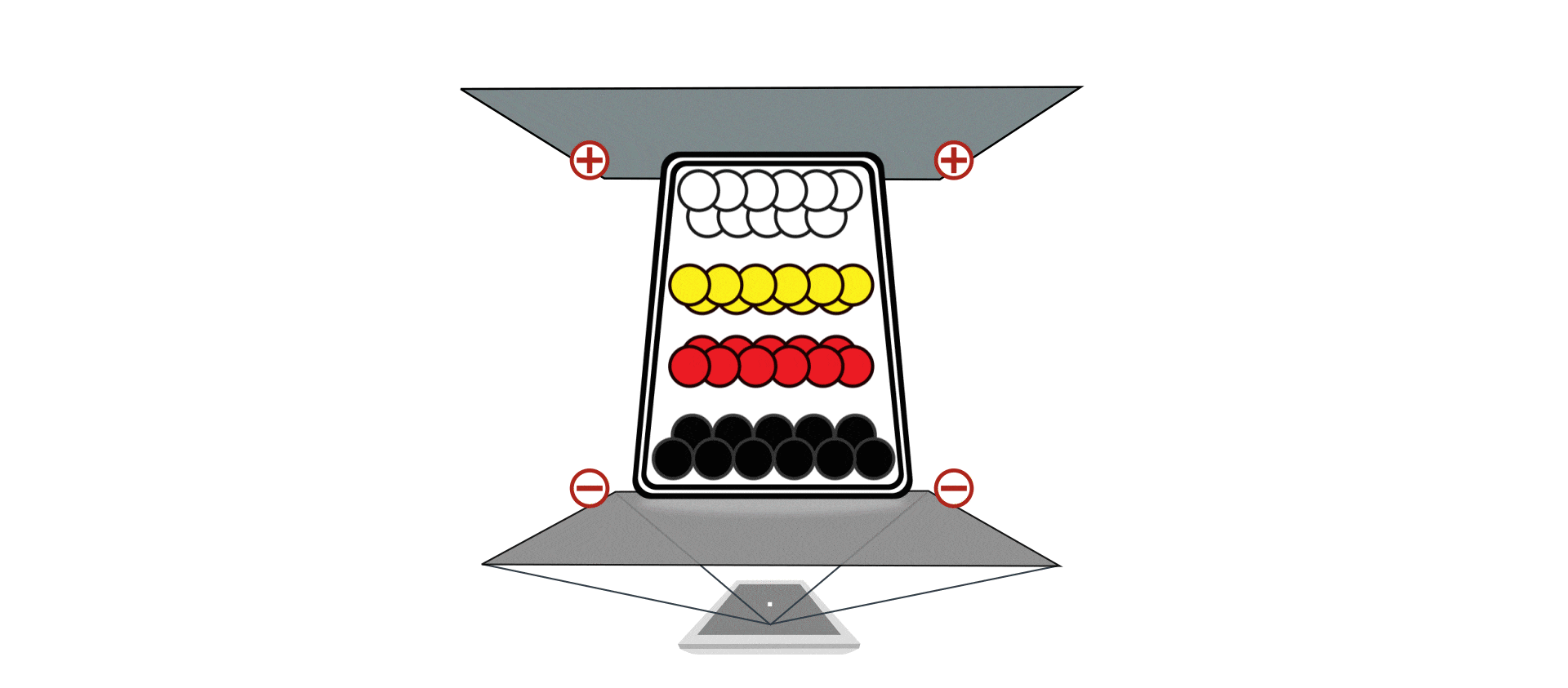
E Ink Spectra 3100四色電子墨水系統,利用黑色、白色、紅色和黃色粒子,提供鮮豔飽和的四種色彩,能展現豐富多樣的資訊與內容。Spectra 3100縮短畫面刷新速度,加大黃色和紅色適用的溫度範圍區間,符合零售商店中多元應用環境的需求。此外,E Ink Spectra 3100電子紙模組搭配最新的多合一驅動IC (all-in-one),可支援各種尺寸、優質、高解析度的電子貨架標籤。
四色電子墨水系統 – E Ink Spectra™ 6
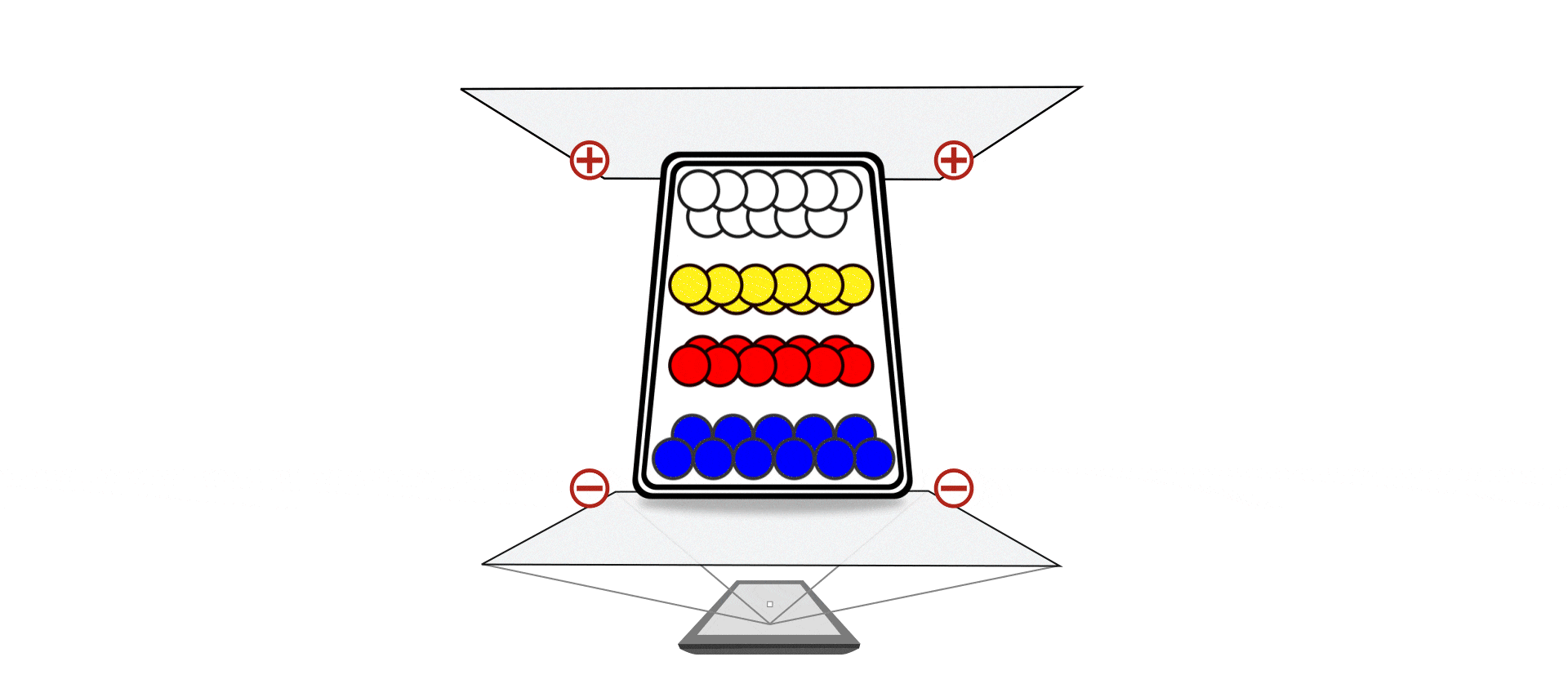
E Ink Spectra 6 採用E Ink Spectra 技術平台為基礎,利用四種顏色粒子產生的六原色,強化顏色光譜(Color Spectrum) 及先進的彩色成像演算法(Color Imaging Algorithm),達成全彩顯示以增進商品廣告和行銷效果。
四色電子墨水系統 - E Ink Gallery™ & E Ink Prism™

先進彩色電子墨水技術平台Advanced Color ePaper (E Ink ACeP™)
2016年,E Ink發表了多色電子墨水系統,稱為先進彩色電子紙顯示器(Advanced Color ePaper, ACeP™)。ACeP™彩色電子紙透過帶色的粒子,實現了全色域顯示效果,不需要彩色濾光片;可在微膠囊(Microcapsule)或微杯(Microcup®)架構下執行。
ACeP™與雙色或三色電子紙一樣擁有優異的低耗電、類紙張、陽光下可視等特性。
E Ink Gallery及E Ink Prism 3產品線即透過ACeP的四色電子墨水技術平台實現。
什麼是電子紙?

Learn More.
常見問題
Learn more about E Ink and how our technology works.
-
What is E Ink?
E Ink is the creator of electronic ink — the optical component of a film used in Electronic Paper Displays. Although futuristic-sounding, electronic ink is actually a straightforward fusion of existing knowledge of chemistry, physics and electronics to create this new material. It's so much like paper, it actually utilizes the same pigments used in the printing industry today.
While E Ink has several types of electronic ink, we became best known for our microcapsule technology. In this system, the electronic ink is made up of millions of tiny microcapsules, about the diameter of a human hair. Each microcapsule contains positively charged white particles and negatively charged black particles suspended in a clear fluid. When a positive or negative electric field is applied, corresponding particles move to the top of the microcapsule where they become visible to the user. This makes the surface appear white or black at that spot. -
Does E Ink have a color product or is it only monochrome?
E Ink has several color products available.
E Ink also offers a three to five color product called E Ink Spectra, which is optimized for electronic shelf labels and point-of-purchase sale applications.
In addition, E Ink offers a one-color product called E Ink Prism, which is optimized for the Architecture market.
For full color, we have E Ink Gallery; and E Ink Kaleido in 4096 colors. -
How long does it take to update an image on an E Ink Matrix display?
An E Ink display module supports numerous modes for updating the display. Different modes exist to support the different update requirements. Update times can be as short as 120 ms. for the entire display. However, because E Ink screens are bi-stable, only the regions of the screen that are changing require updating. Any pixels that are not changing do not require updating.
-
Can an E Ink Matrix display support animation or video rates?
Using the faster update modes, E Ink screens can support animation quality video rates. A number of examples are available from customers that show examples of E Ink screens showing video. However, constant updates reduce the power efficiency of our ink systems. Current production modules do not support video rate updates.





